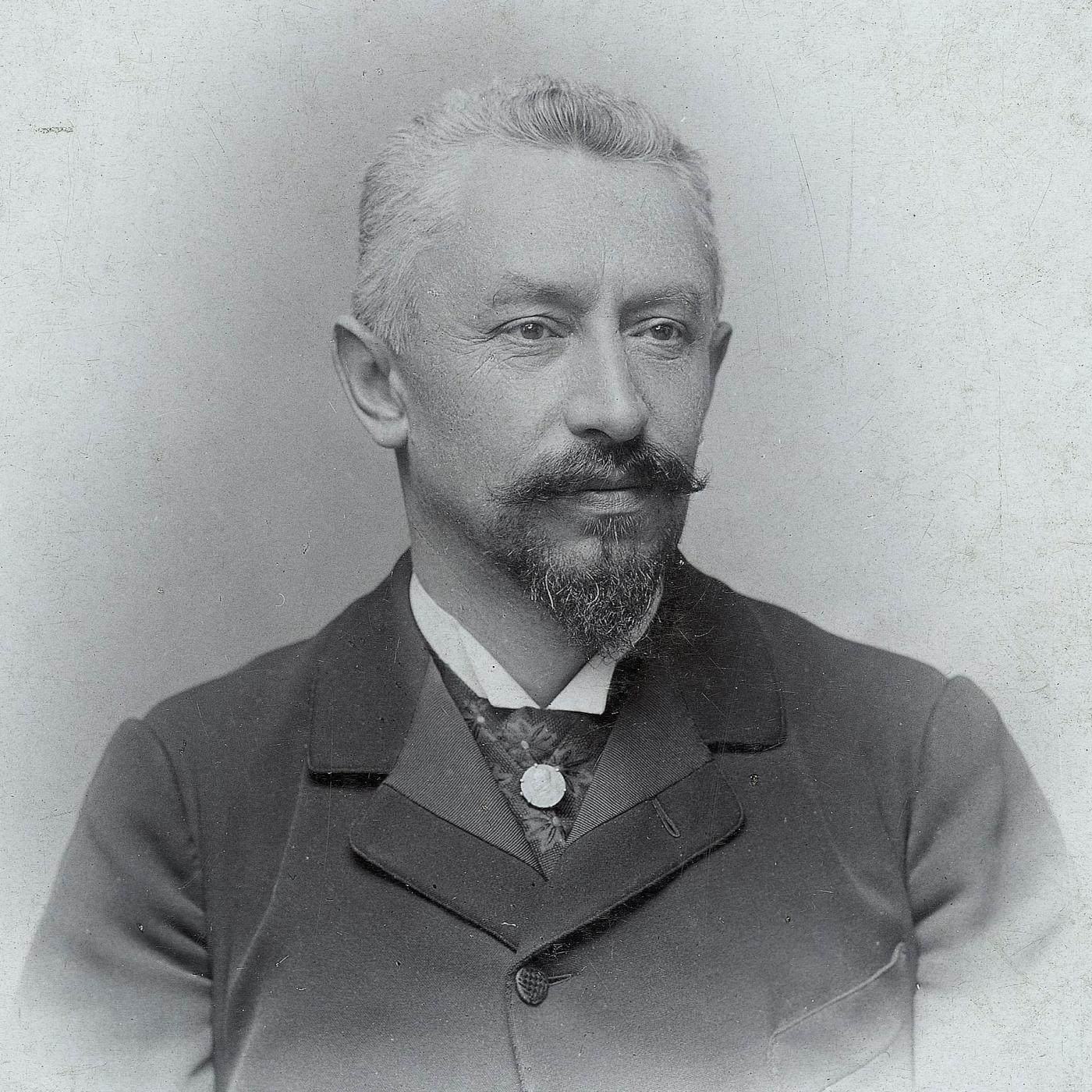In 1868, Edmond Nocard enrolled in the Veterinary School of Alfort, where he was to spend most of his career. His studies were interrupted by the Franco-Prussian War in 1870. He graduated in 1873 as class valedictorian and became a veterinarian and then head of the clinical department in Alfort.
 Joins the Institut Pasteur
Joins the Institut Pasteur

Three years later, he had a decisive encounter with the physician Émile Roux, an associate of Louis Pasteur. “At the time, Pasteur’s ideas were starting to shake up the field of medicine and during this first encounter we discussed contagious animal diseases.” Thanks to Roux, Edmond Nocard joined Louis Pasteur's laboratory at rue d’Ulm, Paris, in 1880. “He brought his veterinary knowledge, his quick-wittedness (…) and that remarkable critical spirit that soon made him an indispensable advisor.” Nocard took part in Louis Pasteur’s famous experiments on vaccinating sheep against anthrax disease in Pouilly-le-Fort.
Contribution to the fight against cholera and to the development of anti-diphtheria serotherapy
In 1883, Pasteur sent Nocard to Egypt along with Roux, Thullier and Straus to study a cholera epidemic. On his return, Nocard set up an annex to Pasteur’s laboratory at the Veterinary School of Alfort, which he was director of from 1887 to 1891. Applying Pasteur’s principles and teaching these to his students, he was involved in an impressive number of breakthroughs, and spanned the gap between veterinary medicine and human medicine. Committed to research on tuberculosis prevention, he was behind the ban on spitting on public transport. He was involved in Institut Pasteur innovations such as the development of anti-diphtheria serotherapy, and was appointed to the board in 1895. This early Pasteur acolyte died prematurely in 1903, aged 53. Today, a building at the Institut Pasteur bears his name.
A bacterium called NocardiaEdmond Nocard’s extensive work secured him international recognition during his own lifetime. He developed methods for harvesting blood serum and tuberculosis bacillus cultures, studied the bacterium responsible for mastitis in cows and discovered mycoplasma and identified it as the cause of bovine pleuropneumonia. He turned tuberculin and mallein into major weapons in the battle against bovine tuberculosis and equine glanders, two bacterial diseases that were transmissible to humans and decimating livestock at the time… One genus of bacterium was called Nocardia in his honor, after his discovery of the agent responsible for bovine farcy (N. farcinia). Another Nocardia can cause nocardiosis in humans, affecting mainly immunocompromised individuals. Nocard also contributed to a major medical breakthrough after his death, by giving his student Camille Guérin a bovine tuberculosis bacillus culture that gave rise to the BCG: Bacillus Calmette-Guérin. |
Timeline of the life of Edmon Nocard> January 29, 1850 > 1868-1871 > 1870-1871 > 1871-1873 > 1873-1887 > 1880 > 1881-1882 > 1883 > 1883-1886 > 1886 > 1887-1891 > 1887-1890 > 1888 > 1889 > 1892-1896 > 1895 > 1898 > August 2, 1903 |
Photo: Edmond Nocard (1850-1903) © Institut Pasteur/Musée Pasteur



